Sample Product Development Roadmaps
-
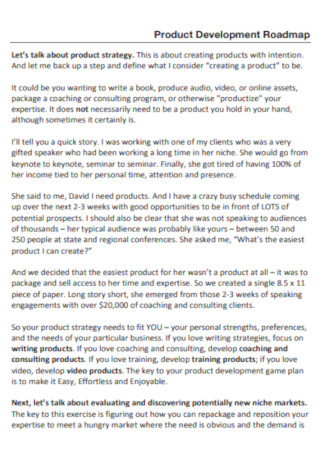
Product Marketing Development Roadmap
download now -

Roadmap for New Product Development Template
download now -
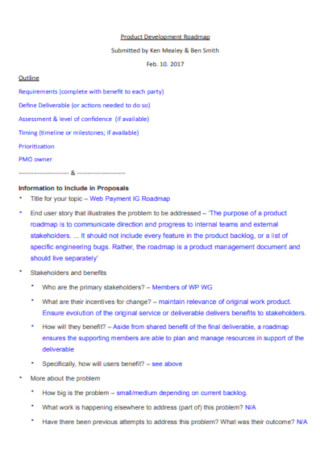
Basic Product Development Roadmap
download now -
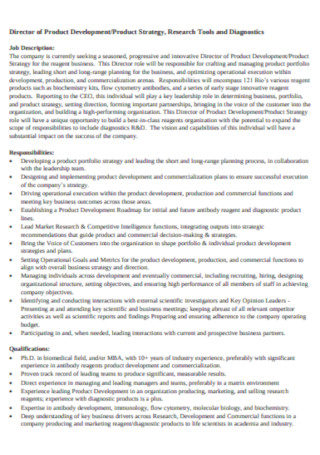
Director of Product Development Roadmap Template
download now -
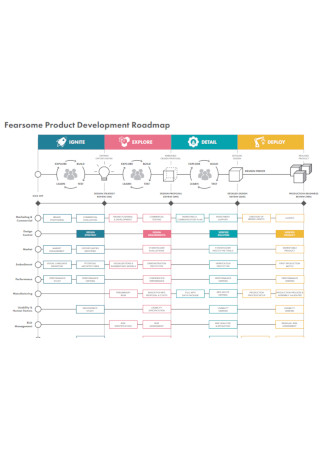
Fearsome Product Development Roadmap
download now -
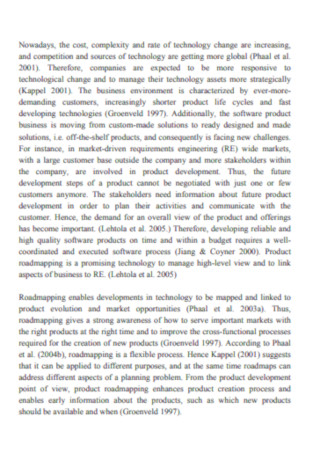
Simple Product Development Roadmap Template
download now -
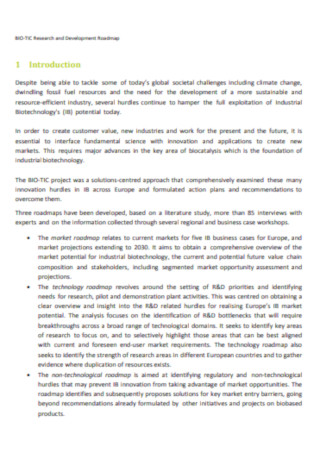
Sample Product Research and Development Roadmap
download now -

Product Roadmapping Training Outline Template
download now -
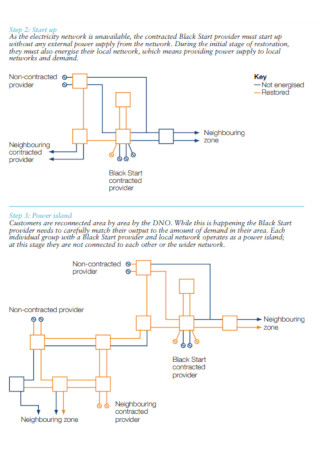
Standard Product Roadmap Template
download now -

Product Managers Development Roadmap
download now -
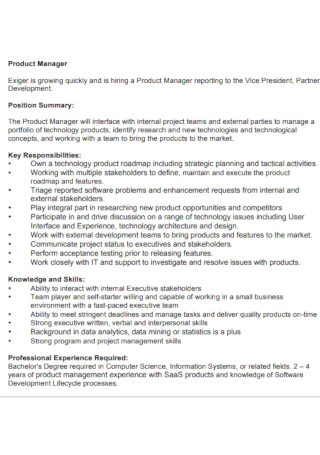
Sample Product Manager Roadmap Template
download now -

Standard Product Development Roadmap Template
download now -
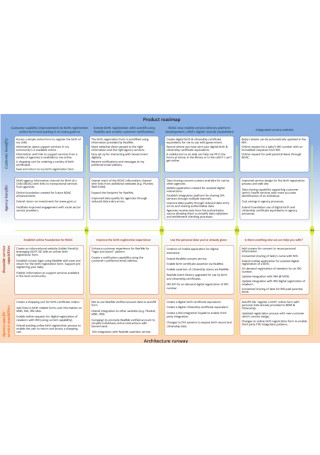
Formal Product Development Roadmap Template
download now -
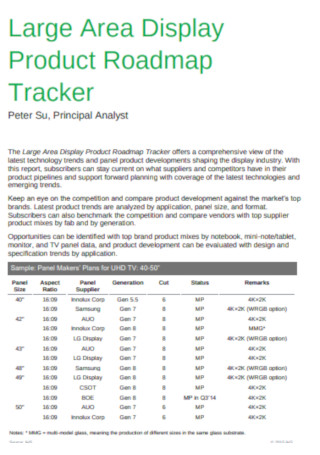
Large Area Display Product Roadmap Tracker
download now -
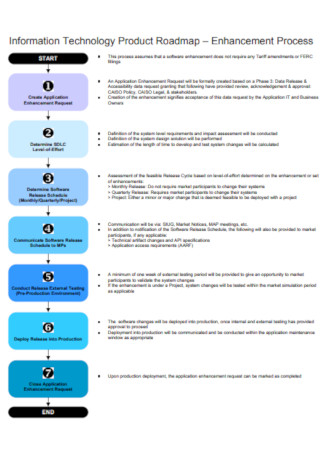
Information Technology Product Roadmap Template
download now -
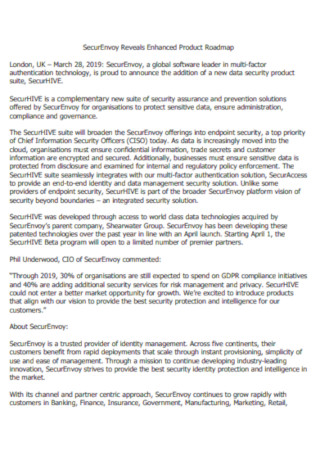
Product Development Roadmap Format
download now -

Product Development Digital Roadmap Template
download now -
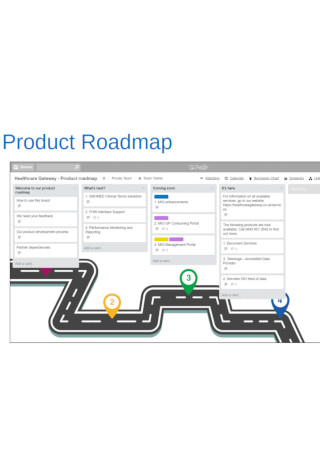
Product Development Gateway Roadmap Template
download now -
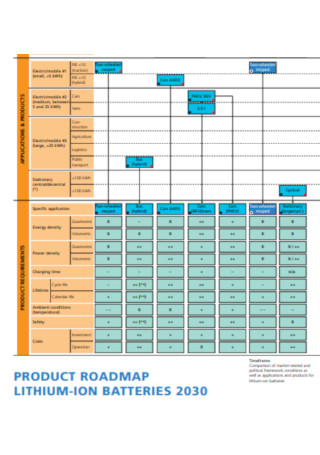
Sample Product Development Short Term Roadmap Template
download now -
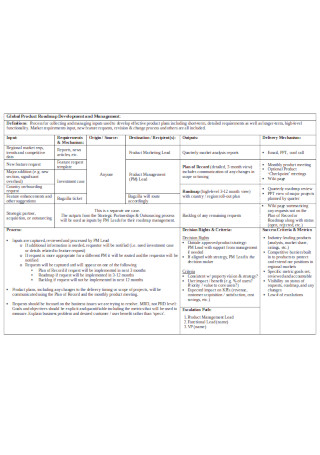
Sample Product Managemet Development Roadmap
download now
FREE Product Development Roadmap s to Download
Sample Product Development Roadmaps
What Are Product Development Roadmaps?
What Are the Stages in a Basic Product Development Roadmap?
Who Benefits From a Product Development Roadmap?
How to Create an Astounding Product Development Roadmap
FAQs
What are the functions of a product development roadmap?
What is the difference between a product development roadmap and a product roadmap?
Wha are the different types of product roadmaps?
What Are Product Development Roadmaps?
A product development roadmap or feature roadmap is a reliable medium you could use to structure the entire process on how to take products to the market from a raw concept. With a roadmap prepared, you can ensure to monitor, control, or manage all efforts brought towards developing a product from the first to the last cycle. Roadmaps offer a graphic touch on the product development stages so you only need to follow those stages to reach the goal of a product’s actual development.
As stated by Inc. Magazine, 95% of products recently developed and distributed in the market tend to fail.
Why Is a Product Development Roadmap Important?
First of all, product development itself is one nuanced and complicated process. Expect it to deal with complex steps, careful processes, and other elements. So to ensure you execute everything smoothly, you need an infographic guide from planning down to the actual development—which is what a product development roadmap is useful for. And since product development has many stages, the roadmap aims for an agile form of project management, meaning the work will be broken down into smaller and more feasible phases. Also, the stages presented in the roadmap bring you constant communication as you are reminded of what to do and consider from start to finish.
Moreover, did you know that 95% of newly developed products released in the market tend to fail? With that staggering fact, product developers and managers should treat the product development stages lightly. Thanks to a product development roadmap, it gets easier to assign and monitor strategic roles. The same goes for increasing the success rate in ensuring that the latest developed products released will be profitable. And besides being a centralized tool of the work overview, it also lets you track the milestones reached as you slowly accomplish every stage of the product development process.
What Are the Stages in a Basic Product Development Roadmap?
From one company to another, there are different stages in a product development roadmap. In fact, the products to create vary a lot may it be a new medical device, a website, a mobile app, or any other project. So don’t always expect the same steps for these products’ roadmaps as well. However, there are standard stages you can expect for every product development process. And the stages expected in standard product developments roadmaps are:
Who Benefits From a Product Development Roadmap?
Indeed, product development roadmaps have helped numerous companies and entities. But who exactly benefits from such roadmaps? In this segment, you will learn who benefits from a product development roadmap and why.
Product Developer
The product developers are basically the ones who make the product development process happen. In fact, most of the roadmap’s benefits go to them as they will base on the visual data presented by the roadmap to manage the tasks. Thanks to the product development roadmap’s presented stages, it gets easier for the developers to assign tasks, schedule activities, set milestones, and prioritize activities wisely.
Business Manager
The product manager, project manager, or business manager could benefit from the whole product development roadmap. If the developers do most of the work, managers are crucial in the decision-making process. If their decisions go wrong, everything may fall apart. Thus, the board or management team shouldn’t make their decisions lightly. Also, the board or management will be assigned to monitor the work done in the product development process and gather updates.
Marketing and Sales Departments
Other important members of the product development procedures are the marketing and sales departments. Their effort is needed to ensure that the products being developed would be sold and distributed in the market as planned. This sector will also be responsible for familiarizing the product qualities and efforts involved in the whole project so they can pitch those ideas towards advertising and other promotional activities.
How to Create an Astounding Product Development Roadmap
You already know what a product development roadmap entails, including what its basic stages often consist of. But how do you make the product development roadmap itself? This section of the article answers that question so that you have a thorough guide on the steps and tips in making the roadmap seamlessly. And the phases of creating an outstanding product development roadmap are the following:
Step 1: Save a Product Development Roadmap Template
Have you seen every product development roadmap template enlisted in this post already? If not yet, then take your time to explore different strategy roadmap examples. And your goal is to opt for the best product roadmap template of your choice. You will eventually work on that template as your reference on how to process the roadmap. Rest assured, you will find the process easier now that you no longer make a product development roadmap from scratch. Simply edit the content and alter its format to personalize it.
Step 2: Identify the Official Goals and Objectives
A common misconception about product development roadmaps is that they are a mere task list. That is untrue because they contain specific goals and objectives too. Without a proper purpose, you cannot simply say that your product is successful or unsuccessful in the end. Hence, identify those objectives in an apparent and well-defined goal statement. And whether you are a startup company or a well-established enterprise, this step still matters.
Step 3: Assign the Designated Tasks to the Team
Do not expect the product development process to be managed by one person alone. Assign the best team for the process and break down the tasks so you can divide the workload into smaller and more workable tasks. Also, ensure that everyone assigned understands the task list given to them. Thus, the key is to agree on which tasks to handle and understand how they are done.
Step 4: Always Track the Progress and Gather Updates
Now that everybody knows what to do, don’t be complacent in assuming that everyone does the job as planned. Always make sure to be updated about the progress by conducting tracking and progress reports. Bear in mind that if one person fails to do a specific task, the rest of the team could suffer its consequences. And look at the roadmap back and forth to ensure that everybody follows the right course.
Step 5: Be Flexible in Adjusting Plans or Priorities
As you follow the steps according to the product development stages, there is a chance that new discoveries, issues, and important aspects come by. And changing plans or altering the task priority list would be worth considering. On that note, your team needs to be flexible or ready to adjust to the circumstances. Sometimes, pushing through the initial plan won’t be good that new plans are necessary. Make sure to analyze the situation very well and that all members of the team agree on the decision for awareness purposes.
Step 6: Be Realistic with the Tasks and Timeline
Most importantly, look back into the steps, tasks, and stages discussed in the roadmap right from the start. It will be your perfect chance to reevaluate the data if the tasks are feasible or not. Also, set a realistic timeline or work schedule to ensure that the project is workable and not a mere dream alone. And be sure to set deadlines strictly as it is for the good of the project.
Step 7: Refine Your Roadmaps’ Format, Layout, and Content
Your final concern would be the product development roadmap’s overall presentation. Check if there is a need to alter the format to make it readable or easy to follow. Another concern is if the roadmap’s layout looks professional or not. And if you notice that there is a huge hodge-podge right in the content, organize your data promptly. You could lessen the word count pr perhaps add a Gantt chart, bar graph, or any other visual organizer. And publish your work once everything is excellent.
FAQs
What are the functions of a product development roadmap?
Expect plenty of functions towards a product development roadmap. One example is during a stakeholder or team presentation. The roadmap offers the visual data and a detailed infographic of how the product development plays out from the beginning until the end. Second, you can use the roadmap for brainstorming or evaluating product ideas. Discuss it with whoever is concerned since the roadmap enlists a couple of facts. Most importantly, the roadmap is useful in preparing for the actual product development. The roadmap serves as the strategic plan so it gets simpler for you to develop the actual product later on.
What is the difference between a product development roadmap and a product roadmap?
Although a product development roadmap and a product roadmap seem related to each other, there is a significant difference too. Indeed, they both involve planning and strategies but their elements in the product strategy are dissimilar. The product development roadmap is more concerned with tracking the development process of a product within a short timeline, including its milestones. Meanwhile, a product roadmap has a long-term timeframe compared to the product development roadmap. That explains why there are many 12-month product roadmaps out there.
Wha are the different types of product roadmaps?
The main types of a product roadmap are the portfolio roadmap, strategy roadmap, releases roadmap, and features roadmap.
Whether you plan on creating a gadget, software, or any new product, you can’t go wrong easily with a specific product development roadmap that covers the right standards, requirements, and decisions to succeed in all product development stages. And a product development roadmap example or any sample template enlisted in this post is just the perfect blueprint for you to use. Choose a template to download and optimize now!
